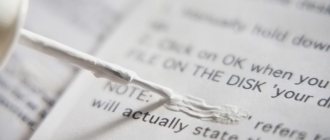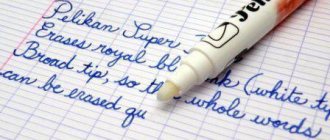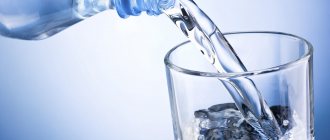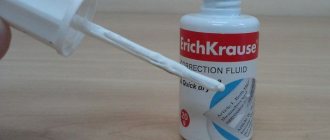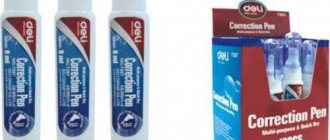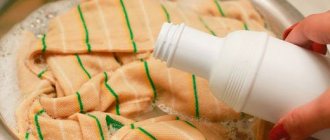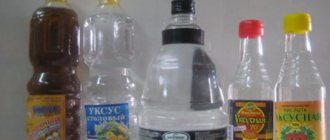Schoolchildren and students, office workers - everyone who is associated with paper media uses proofreaders today. The first samples of these products appeared in the fifties of the last century. The Japanese and Americans are still fighting for the palm of this invention.
Over the past half century, the barcode has changed significantly. Several types of stationery “paint” have appeared, each of which has both advantages and disadvantages. Today, correctors are divided into dry and liquid. The first includes the most modern development - correction tape, the second - a pencil and a liquid stroke.
Expert opinion
It-Technology, Electrical power and electronics specialist
Ask questions to the “Specialist for modernization of energy generation systems”
Review of Brauberg tape corrector | Helps hide typos. Since the correction pen assumes one single design option, the existing types of these office supplies differ only in the following. Ask, I'm in touch!
Correction tape: description. Where is tape corrector used and how to use it?
Schoolchildren and students, office workers - everyone who is associated with paper media uses proofreaders today. The first samples of these products appeared in the fifties of the last century. The Japanese and Americans are still fighting for the palm of this invention.
Over the past half century, the barcode has changed significantly. Several types of stationery “paint” have appeared, each of which has both advantages and disadvantages. Today, correctors are divided into dry and liquid. The first includes the most modern development - correction tape, the second - a pencil and a liquid stroke.
Correction fluids
They are produced in small bottles, with a brush, applicator, and sponge applicator built into the cap. This type is simple and easy to use: shake the bottle, dip the brush in the liquid and paint the desired area.
However, in our time, such a product is considered an outdated type, since for a long time manufacturers have been producing more ergonomic and convenient forms of putty.
Pencil corrector
It looks almost no different from a regular pen, but instead of paste it is filled with correction fluid, which comes out through a small hole (1 mm) in the metal tip.
The advantage of this type is that it allows you to make point corrections to the smallest details of the text and even correct character flaws. But deleting a large piece of text with a pencil is not very convenient. In this situation, it clearly loses to liquids with a brush.
Correction roller tape
This is the latest development in the world of correctors. It is a dry composition, which is enclosed in a convenient and ergonomic roller. Correction tape will correct the desired section of text in a matter of seconds: the tape applied to the paper (provided that the corrector is of high quality and is used correctly) will be invisible, not only by sight, but also by touch.
This type has its drawbacks: it will not help in correcting small point errors, its width is standard (4-6 mm), so when correcting small font with small line spacing, you can easily go beyond the edges of the lines.
Corrective tape Attache
This device is produced by the Russian umbrella brand Attache, under which it offers customers office supplies in the mid-price category, as well as high-quality economy-class goods. The history of the stationery brand Attache began in 1997. The company's products are produced at large enterprises in Europe, Southeast Asia and Russia.
The Attache correction tape allows you to write immediately after correcting the text. A removable cap protects the working unit from drying out. Has an increased length (20 m). Tape width - 5 mm.
This correction tape is easily and accurately applied to the desired area of text. How to use? Everything is extremely simple: remove the protective cap, place the tip of the working unit at the starting point of the line to be deleted. Lightly press the corrector onto the paper and draw a solid line of the desired size. The dry layer is applied softly and easily. First, try correcting the text in your draft.
The Attache tape corrector is a compact device that can easily be placed in a pencil case or pocket. It is equally effective on any type of paper. After photocopying it is completely invisible. The device has a removable block, which can be easily replaced with a new one after using the coloring composition.
fb.ru
What is a corrector?
A stationery proofreader, or stroke, is a tool that is capable of making corrections in text written on paper. In fact, it covers up what has already been written: it is applied to the error in an even layer and dries, forming a thin crust on top of which corrections can be written. Characterized by a smooth matte white color.
Important! The first correction fluid was invented in 1951 by American Bette Nesmith. Somewhat later, she became the founder of Liquid Paper.
The composition of the liquid, as a rule, includes low molecular weight polyvinyl chloride, dissolved in a mixture of trichlorethylene, barium sulfate (lithopone) or titanium oxide.
Important! The composition of the liquid may vary, but largely depends on the base of the corrector.
Text correction products come in liquid and dry forms. Let us consider the forms of release of this and that type, as well as their components and other features.
Corrector pen
If many mistakes are made, then to correct and disguise mistakes, use a stroke - putty, a corrector with a brush, with the help of which they cover the written layer with a width of 3-4 mm. To correct spot marks, a corrector pen is more suitable, with the help of which a layer 1 mm wide is masked, which, in turn, is inconvenient to use for correcting large errors.
What does it consist of?
The pen is a bottle that holds up to 30 ml of correction fluid, with a tiny metal ball inside for stirring the mixture. There is also a microvalve inside that regulates the supply of composition to the writing element. The pen works in the same way as a regular ballpoint pen: when you press on the paper, the roller bearing rotates and allows the masking fluid to get into the place of the mistake through a hole in the metal tip.
Rules for working with a corrector pen
Just before editing the text:
- shake the handle several times to mix the liquid;
- remove the protective cap and lightly squeeze the container with the composition;
- then they paint over the slips and blunders, as if they were sketching with an ordinary pen or pencil.
Attention! To avoid rapid drying of the correction composition, do not leave the handle open.
If the composition does not appear on paper, then the following has happened:
- Drying of the composition on the ball assembly. In this case, resuscitation measures are taken. They press the ball mechanism inward a little with a needle, trying to turn it around, shake it a little with the corrector and try to paint the pen with pressure.
- If actions with the ball mechanism did not help, the reason is that the composition has dried out in the tank. If the base is aqueous, add a few drops of tap water; if it is alcoholic, add a little liquid containing alcohol. To carry out this procedure, disassemble the pen and pour a little diluent into the ball assembly.
Which corrector should I choose?
Many schoolchildren, students and office workers are looking for an answer to the question, which proofreader to choose? Although most working documents are now prepared electronically, a considerable part is still written on paper, and no one is immune from errors. In this case, a stationery “thing” called a proofreader becomes indispensable. In this article we will look at what they are, which putty is best to choose for a particular case.
What is a corrector?
A stationery proofreader, or stroke, is a tool that is capable of making corrections in text written on paper. In fact, it covers up what has already been written: it is applied to the error in an even layer and dries, forming a thin crust on top of which corrections can be written. Characterized by a smooth matte white color.
Important! The first correction fluid was invented in 1951 by American Bette Nesmith. Somewhat later, she became the founder of Liquid Paper.
The composition of the liquid, as a rule, includes low molecular weight polyvinyl chloride, dissolved in a mixture of trichlorethylene, barium sulfate (lithopone) or titanium oxide.
Important! The composition of the liquid may vary, but largely depends on the base of the corrector.
Text correction products come in liquid and dry forms. Let us consider the forms of release of this and that type, as well as their components and other features.
Liquid stationery proofreader
Liquid corrector can be produced in the form of a pen with a metal tip or in a bottle with a brush, foam applicator or spatula as a corrective element:
- The liquid in the bottle is universal in use and allows you to correct both entire lines and small errors.
Important! A convenient option for many is the BIC Tipp-Ex Rapid document proofreader model with a foam applicator. A small sponge makes it possible to apply the liquid carefully and precisely, without blots or excess.
- The pen corrector is more suitable for spot, small corrections on any type of paper, including fax paper.
Important! The width of the trace of such a product is about 1 mm. Therefore, it represents the best option for correcting handwritten text.
- The body of the pen is made of thin elastic plastic, because when using this type of corrector you will need to lightly squeeze the reservoir with liquid with your fingers.
Important! After use, the clerical touch must be closed with a cap.
- Some manufacturers produce universal 2-in-1 products that are equipped with both a tip and a brush. Such tools allow you to correct both minimal areas and large areas.
Important! Similar text correction tools are produced by manufacturers Optima and Axent.
- The composition of liquids can be water, alcohol or emulsion based. Liquid concealer always comes with a ball inside, which helps to agitate the composition.
Important! Regardless of the chosen form of release of the stroke, sometimes you can get dirty with the liquid or leave blots on your clothes. Our tips from the following articles will help you solve both problems without much hassle:
- How to remove streaks from clothes?
- How to remove streaks from skin?
Features of water-based liquid:
- It has no odor, which makes it more attractive for allergy sufferers.
- Safe to use.
- Non-flammable.
- Does not work well in the cold, and freezes at low temperatures.
- It takes a relatively long time to dry.
Important! If the corrector in the bottle dries out over time, it can be diluted with water in a small amount. Also find out other ways, including for other types of strokes, to dilute the corrector.
Features of alcohol-based corrector:
- Qualitatively covers errors in the text.
- Dries very quickly.
- Resistant to low temperatures.
- Characterized by a pungent odor.
- Highly flammable.
Features of emulsion-based liquid:
- Dries quickly.
- Non-flammable.
- Does not have a pungent odor.
- Resistant to low temperatures.
Important! In fact, this type of corrector combines all the positive qualities of the two previous types.
Dry corrector
The dry type of office correction tool is presented on the market in the form of tapes 4-6 mm wide. A dry layer of corrector is applied to it. The tape itself is located in a plastic case.
Important! Most often, the body is made of transparent plastic, which allows you to control the amount of product remaining.
Dry Corrector leaves a smooth, dry surface that you can write on immediately. This corrector is suitable for any type of paper. Its only drawback is the risk of the tape breaking if used incorrectly.
Important! Due to its compact size, this type of office tool can easily be placed in a pencil case or pocket.
Manufacturers of the stationery “miracle”
Today, the corrector is not a new product and is produced by a large number of companies. If you are thinking about which corrector to choose for frequent and long-term use, it makes sense to give preference to the products of one of these companies:
- Berlingo.
- Liquid Paper.
- Eric Krause.
- Tipp-Ex.
- Snopake.
- White-out.
- White Away.
- Edigs.
- Pentel.
- Kores.
- Twink.
Important! For first-graders, a proofreader is in most cases a prohibited office product, however, there are loyal teachers who are not against careful corrections in the text. As for older children, teenagers and adult office workers, they simply must have this device.
Video material
Choosing the best corrector for the office can only be done through testing, and if corrections are required frequently and of a different nature, then it is necessary that the office have different types of putty. The information from the article probably helped you understand the types of this miracle remedy and decide on the composition and form of release.
serviceyard.net
Manufacturers of the stationery “miracle”
Today, the corrector is not a new product and is produced by a large number of companies. If you are thinking about which corrector to choose for frequent and long-term use, it makes sense to give preference to the products of one of these companies:
- Berlingo.
- Liquid Paper.
- Eric Krause.
- Tipp-Ex.
- Snopake.
- White-out.
- White Away.
- Edigs.
- Pentel.
- Kores.
- Twink.
Important! For first-graders, a proofreader is in most cases a prohibited office product, however, there are loyal teachers who are not against careful corrections in the text. As for older children, teenagers and adult office workers, they simply must have this device.
Tape correctors
They are a tape with a dry corrector applied, enclosed in a roller.
The advantage is the ability to immediately write on the correction tape and the impossibility, if used correctly, to visually and organoleptically determine its presence on the sheet, and the disadvantages include breaks in the tape if the corrector is handled carelessly. The tape width is 4-6 mm, at which it is impossible to mask point errors. Russian users can purchase these products, manufactured in our market by Attache. Its advantages include the ability to change the module with the tape. Before use:
- remove the cap;
- set the roller to the beginning of the text being corrected;
- Without letting go of the gadget, draw a continuous line of the required length.
